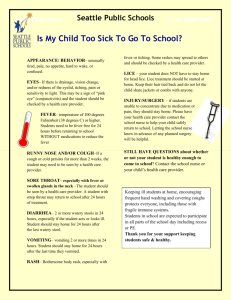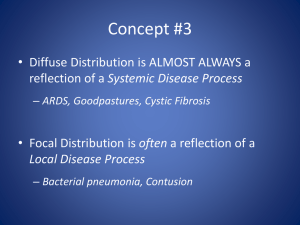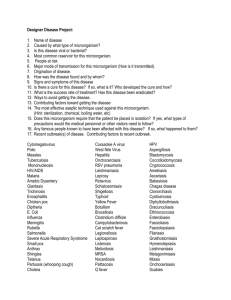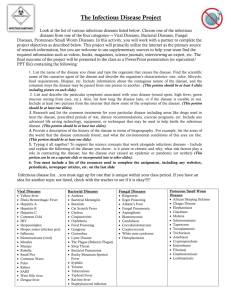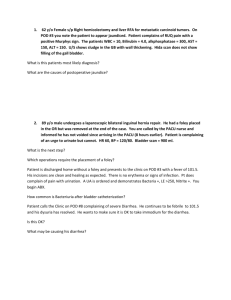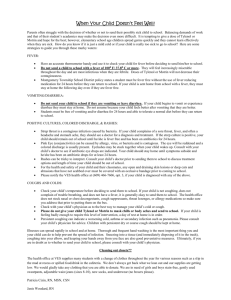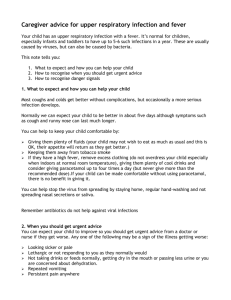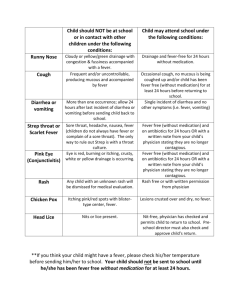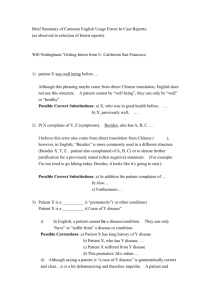EM Lecture- Acute Surgical Complications
advertisement
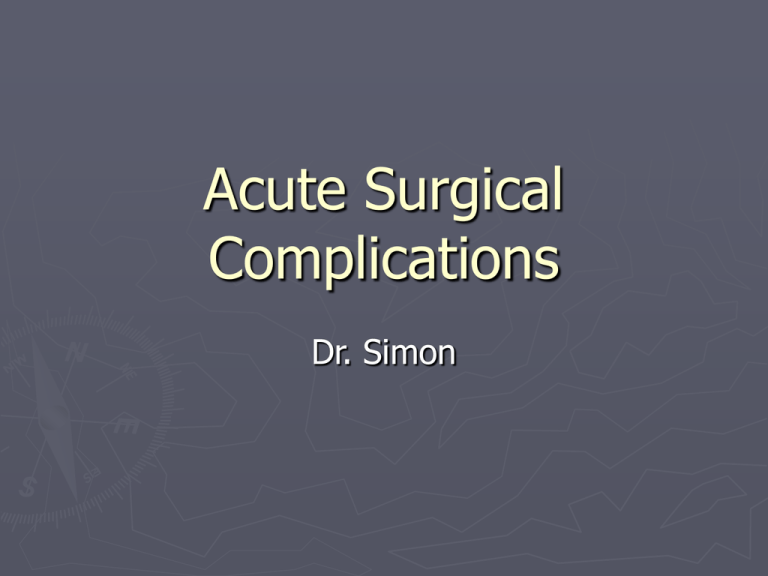
Acute Surgical Complications Dr. Simon Postoperative fever ► Atelectasis is the most commonly occurs in the early postoperative period ► The infections usually become manifest in 4 to 5 days ► 38-38,5º is the temperatures. Physical signs and symptoms of surgical complications ► Fever Tachycardia Oliguria Jaundice Abdominal distension Atelectasis, transfusions reactions, pulmonary embolism Sepsis, hypoxemie, pain Hypovolemie, hemolysis Hemolysis, biliar obstruction, sepsis Paralytic ileus, hemorrhage, obstruction Early postoperative fever ► In 24 hours, after operation, is very important to made an diognosis of -streptococcal -clostridial Evaluate the clinical situation. Evaluation ► The most fever:- pulmonary, =atelectazi, =pneumonitis Essential- auscultation of the lungs, - not chest film, -important blood cultures for 38,5º, -renal infection=nosocomial infection, -important=test for immunosuppressed, for cancer. Mental status abnormalities ► Changes in mental status; concern in time patient and family. ► 1 = somnolence, confusion, convulsions, and coma-affect the brain such as hypoxia, hypoglicemia, uremia, elevated blood ammonia. ► 2 = Drugs: narcotic, tranquilizers, cimetidine-affect intracranian lesions. ► 3 = Commonly = septic emboli, and brain abscesses. Failure after anesthesia ► 1. Cerebrovascular accident-if they have preoperative carotid occluded ½. ► 2. More commonnly, agitation and anxiety immediate postoperative period, and pain – fortunately is such discomfort (naloxone) ► 3. Agitation and anxiety induce by hypoxemia, or intraabdominal hemorrhage-appropriate intervention. ► 4. Hallucinations after meperidine,= change this. Delirium tremens ► Alcoholic patients = sindrom of agitation and tremors, hallucinations and convulsions. = hyperpyrexia, dehydration, insufficiency adrenal – required medical hydration, sedation (thorazine), rarely intravenous alcohol, vit. B1, b6, b12, and for convulsions barbiturates. A.Infections ► Major postoperative intraabdominal and intratoracic infections increase patient morbidity, cost and mortality. ► An abscesses generalized peritonitis or mediatinitis = multiple organ failure. ► Diagnosis needs to be accurate, for an recovery with surgery General considerations ► Fever and pain particulary, ► Leukocyte 1. low rate and grade is common if the fever is 38º and decrease, 2. loukocytosis occurring later with fever and (left shift), is indicate an infection Features of the operation ► -patient with simple extirpation now risk, ► -patient with bowel anastomosis are at greater risk for intraperitoneal abscess. ► CT, radiology, ultrasonografhy for accure localization. A.1. Intra-abdominal infection ► A. Intraperitoneal abcesses occur most commonly- fever, pain, =after appendicectomy and colon resections, =pelvic absces, after sigmoid perforation of diverticulum Treatment ► After simply digital or vaginal examination = with ultrasonografy or CT drained through the rectum or vagina, or op. ► Alternatively = a small lower abdominal incision may be necessary to completely evacuated. B.2.Subphrenic and subhepatic abscesses ► Is commonly following operations on upper abdominal organs. =X-ray, CT, an elevated hemidiafragm, and bubbles or air =scintigrafy of splen Tr. Surgycal in 2-4 days.


